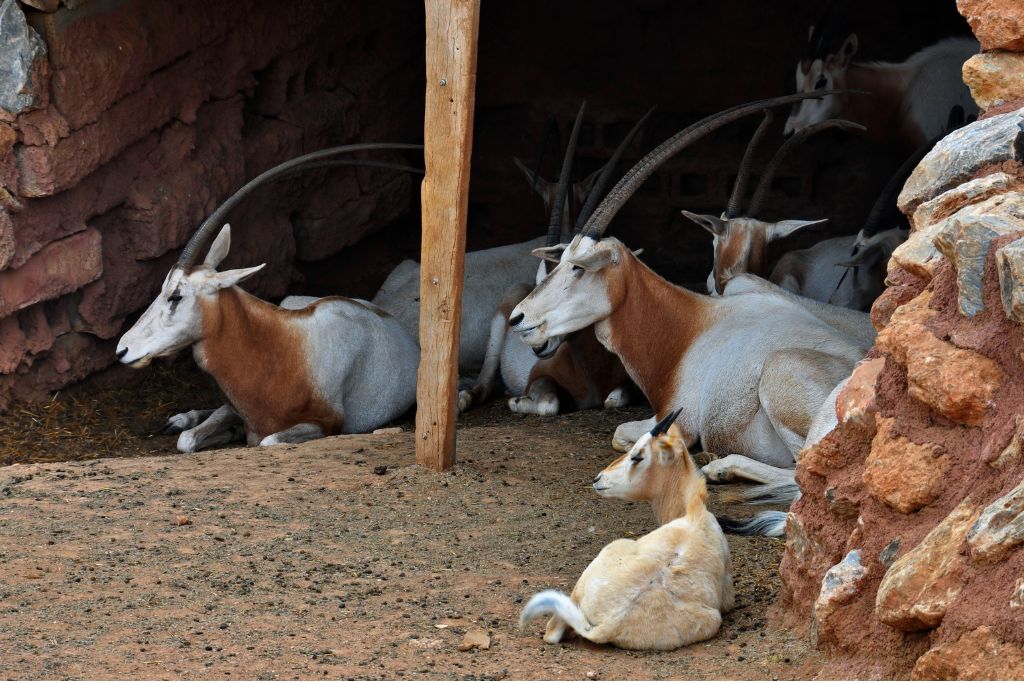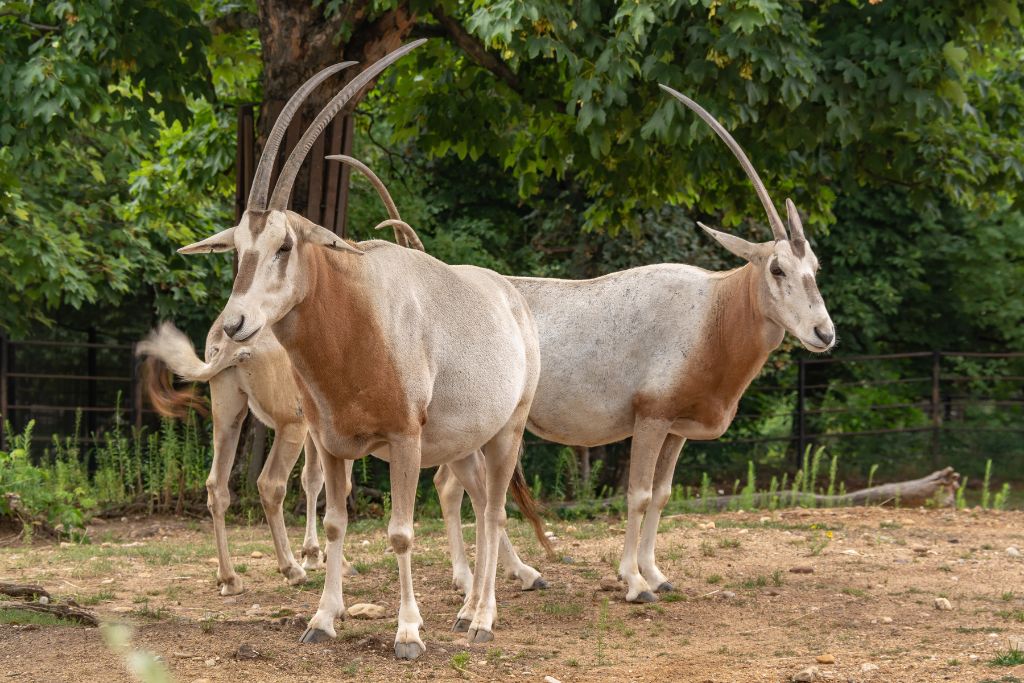The Scimitar-horned Oryx (Oryx dammah) was once found throughout the northern and southern ranges of the Sahara Desert. But decades of hunting and other practices have decimated populations, until the the International Union for Conservation of Nature (IUCN) classified the species as ‘extinct in the wild’ in 2000. Eight years following the first reintroductions of the species in a protected range in Chad, the species has been downlisted to ‘Endangered’ in the most recent IUCN Red List update.
—
A Desert Antelope
The Scimitar-horned Oryx is one of the species of desert antelope that once roamed the Sahara Desert in Africa, along with Dama Gazelle (Nanger dama) and the Addax (Addax nasomaculatus). The Oryx is a well-adapted desert species, able to survive on little water and withstand internal body temperatures as high as 46C (115F). A key phenotypic trait of the Oryx is their thin, pointed horns that curve backwards and can grow to several feet in length. Naturally found in the arid landscape of the Sahara, this species eats grasses and the few fruits of flowering plants found in the desert, which are also their main source of water.
In 2000, the species was listed as “Extinct in the Wild” by the International Union for the Conservation of Nature (IUCN) as a consequence of several anthropogenic threats. The disappearance of the species across its native range can be heavily attributed to overhunting for meat and their horns during a time of unrest within Chad in the 1970s-1980s, as well as overgrazing of their food sources by growing livestock herds. The last wild individuals were seen in the 1980s, though the species’ conservation status was only updated 20 years later.
You may also like: 5 Biggest Environmental Issues In Africa In 2024
Global Collaboration Drives Species Recovery
The recovery story of the Oryx is one that highlights how powerful global collaboration efforts can successfully aid conservation of species.
Since the 1960s, the Oryx has been under human care in zoos and private herds, creating a suitable genetically variable population to begin a captive breeding program. In 2009, an idea was created to reintroduce the Oryx back into a region of its historical range. Three years later, during a stakeholder meeting in Chad, Abu Dhabi’s Environmental Agency (EAD), the government of Chad, and Sahara Conservation reached an agreement to work towards reintroduction.
Sahara Conservation, an NGO dedicated to mammal conservation in Africa, worked closely with the Chadian government to improve management of the game reserve and increase protections and enforcements of wildlife laws in the country. Funding and habitat research was supported by the Zoological Society of London (ZSL) to determine a region within the Oryx’s historical range that offered the best chances of success based on availability of suitable habitat.
The breeding program began in 2013. To establish the initial population in Abu-Dhabi that would be the basis for the reintroduction herd, the Royal Zoological Society of Scotland conducted genetic testing to ensure genetic diversity between individuals. This was important to prevent a possible future genetic “bottleneck” of the species that could harm its chances of establishing a wild population.
Three years later, 21 Oryx were transported from the breeding population in Abu-Dhabi to the game reserve in Chad to be reintroduced in their native range, marking an incredibly important step in the species’ recovery. Since then, 285 Oryx have been released into the wild and now a wild population of over 600 individuals exists in the arid grasslands of Chad. The Smithsonian National Zoo & Conservation Biology Institute led post-release tracking and monitoring. At their SCBI facility in Front Royal, Virginia they tested different tracking methods on a captive population to ensure that collars remained functional and did not interfere with daily actions of individuals.
More on the Topic: Breeding Programmes For Endangered Species: Do They Really Help?
The collaboration achieved to help the Scimitar-horned Oryx is a glowing example of the global power of the conservation community. A connection of multiple governments and non-governmental organizations (NGOs) from across the globe came together to save this species.
The downlisting reflects a “genuine” change in conservation status that represents a real increase in population over time. The Scimitar-horned Oryx is one of the first ever species classified as extinct in the wild to be downlisted on the IUCN Red List, an incredible accomplishment for all those involved in the reintroduction.

As of the most recent update to the Red List in December 2023, there are 84 species that are classified as “extinct in the wild,” including the Guam kingfisher and the Polynesian tree snail.
Prioritizing global cooperation is key to protect and reestablish threatened and disappearing species. As this success story shows, sometimes unexpected partnerships are the ones that can create the most positive change and leave a lasting impact for conservation.
You might also like: 10 of the World’s Most Endangered Animals in 2024




















